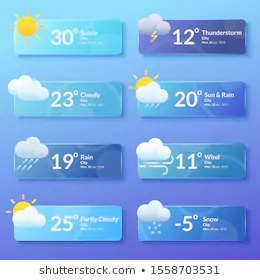By Brian Moseti
 By the time James Matano was quitting his nursing job to pursue a career in farming, he had developed a strategy to put him ahead of the competition.
By the time James Matano was quitting his nursing job to pursue a career in farming, he had developed a strategy to put him ahead of the competition.
Unlike most new farmers, who are lured into selecting crops based on how much is currently in the market and the prevailing prices, Matano knew from the outset the importance of structuring his calendar year around long-range weather patterns, which effectively helped him pursue the kinds of crops that would be ready for market whenever there was a shortage of supply.
“The problem with most farmers is that they rush to cultivate certain food crops after realizing there is a shortage in the market. Unfortunately, this ends up leading to an oversupply of food items in the next harvest season,” said Matano.
But driving farming activities using weather monitoring strategies allows farmers to work out what might be oversupplied or undersupplied in future, and plant to catch the best pricing based on probable shortages, which makes post-harvest management and market sourcing a lot easier.
Related News: Weather SMS to help over 300,000 farmers in planning
For instance, if there is a lot of rain forecast outside the normal rainy season, for instance in Janurary and February, that is liable to damage a lot of tomato vines and leave tomatoes in short supply at a time when they are normally abundant.
“As long as you understand how certain crops respond to rain and dry weather, you can easily plan your production cycle around forecasts, including setting up contingencies for irrigation whenever the need presents,” said Benson Lemayian, an agronomist based in Kajiado.
Matano, for example, plans his production year in January using resources provided by the Kenya Meteorological Department, which hosts a repository containing monthly, seasonal and annual weather forecasts for different counties.
“I normally work with a combination of seasonal and annual forecasts. The seasonal forecasts allow me to identify the fastest growing crops that will mature within the specified rainy spells, while the annual forecasts help me structure my irrigation plans to cover the months with a scarcity of rainfall,” he said.
For example, with the seasonal predictions indicating that the Mwala area of Machakos County, will receive 341-400mm of rainfall between March, April and May, Matano set out to cultivate cabbages, which he will replace with tomatoes at the beginning of June, partially under irrigation, while targeting the August market.
“I already knew that there would be a tomato glut in May and June as most farmers plant it around the April rains hoping for the great profits the crop sometimes has. So, it made sense for me to go for cabbages, which require adequate rainfall and then plant tomatoes later, because I can manage those with irrigation,” he said.
















Comments powered by CComment